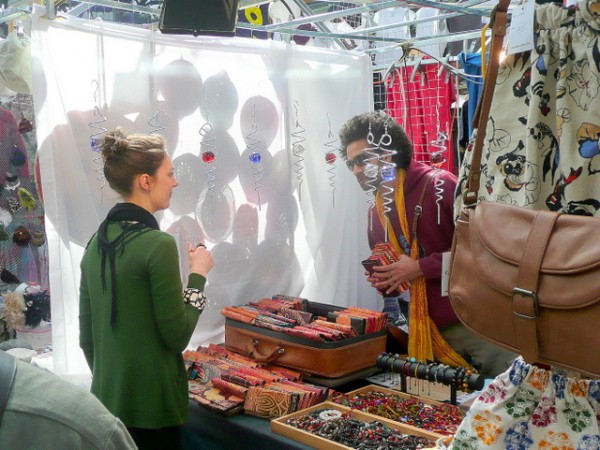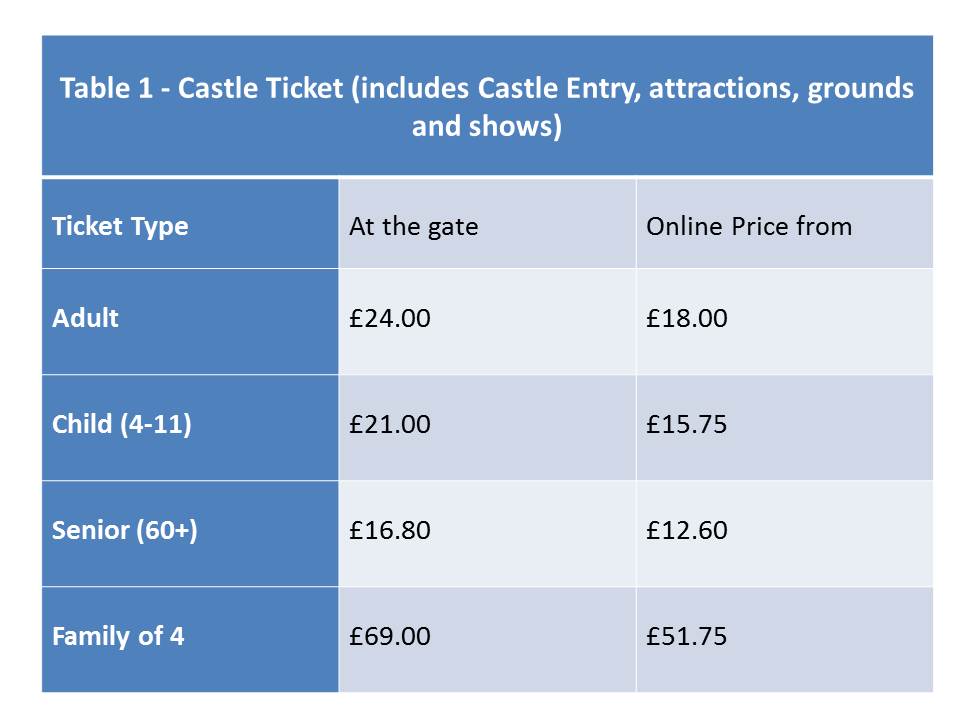 On Saturday 31 August, tickets for the much-heralded Oasis reunion tour went on sale through the official retailer, Ticketmaster. When the company sells tickets, the acts or their promoters can choose whether to use a static pricing system, where each type of ticket is sold at a set price until they have all been sold. Or they can use a dynamic pricing system (‘in-demand’ or ‘platinum’ tickets, as Ticketmaster calls them), where there is a starting price quoted, but where prices then rise according to demand. The higher the demand, the more the price is driven up. Acts or their promoters have the option of choosing an upper limit to the price.
On Saturday 31 August, tickets for the much-heralded Oasis reunion tour went on sale through the official retailer, Ticketmaster. When the company sells tickets, the acts or their promoters can choose whether to use a static pricing system, where each type of ticket is sold at a set price until they have all been sold. Or they can use a dynamic pricing system (‘in-demand’ or ‘platinum’ tickets, as Ticketmaster calls them), where there is a starting price quoted, but where prices then rise according to demand. The higher the demand, the more the price is driven up. Acts or their promoters have the option of choosing an upper limit to the price.
Dynamic pricing
The Oasis tickets were sold under the dynamic pricing system, a system previously used for Harry Styles, Bruce Springsteen, Coldplay and Blackpink concerts, but one rejected by Taylor Swift for her recent Eras tour. Standing tickets for the Oasis concert with a face value of around £135 were quickly being sold for over £350. There were long online queues, with the prices rising as people slowly moved up the queue. When they reached the front, they had to decide quickly whether to pay the much higher price. Some people later suffered from buyer’s remorse, when they realised that in the pressure of the moment, they had paid more than they could afford.
Dynamic pricing is when prices change with market conditions: rising at times when demand exceeds supply and falling when supply exceeds demand. It is sometimes referred to as ‘surge pricing’ to reflect situations when price surges in times of excess demand.
Dynamic pricing is a form of price discrimination. It is an imperfect form of first-degree price discrimination, which is defined as people being charged the maximum price they are willing to pay for a product. Pricing in an eBay auction comes close to first-degree price discrimination. With dynamic pricing in the ticket market, some people may indeed pay the maximum, but others earlier in the queue will be lucky and pay less than their maximum.
Ticketmaster justifies the system of dynamic pricing, saying that it gives ‘fans fair and safe access to the tickets, while enabling artists and other people involved in staging live events to price tickets closer to their true market value’. The company argues that if the price is below the market value, a secondary market will then drive ticket prices up. Ticket touts will purchase large amounts of tickets, often using bots to access the official site and then resell them at highly inflated prices on sites such as Viagogo and Stubhub, where ticket prices for popular acts can sell for well over £1000. The day after Oasis tickets went on sale, Viagogo had seats priced at up to £26 000 each!
Oasis and Ticketmaster have tried to stamp out the unofficial secondary market by stating that only tickets bought through the official retailers (Ticketmaster, Gigsandtours and SeeTickets) will be valid. If fans want to resell a ticket – perhaps because they find they can no longer go – they can resell them on the official secondary market though Ticketmaster’s Fan-to-Fan site or Twickets. These official secondary sites allow holders of unwanted tickets to sell them for anything up to the original face value, but no more. Buyers pay a 12% handling fee. It remains to be seen whether this can be enforced with genuine tickets resold on the secondary market.
Examples of dynamic pricing
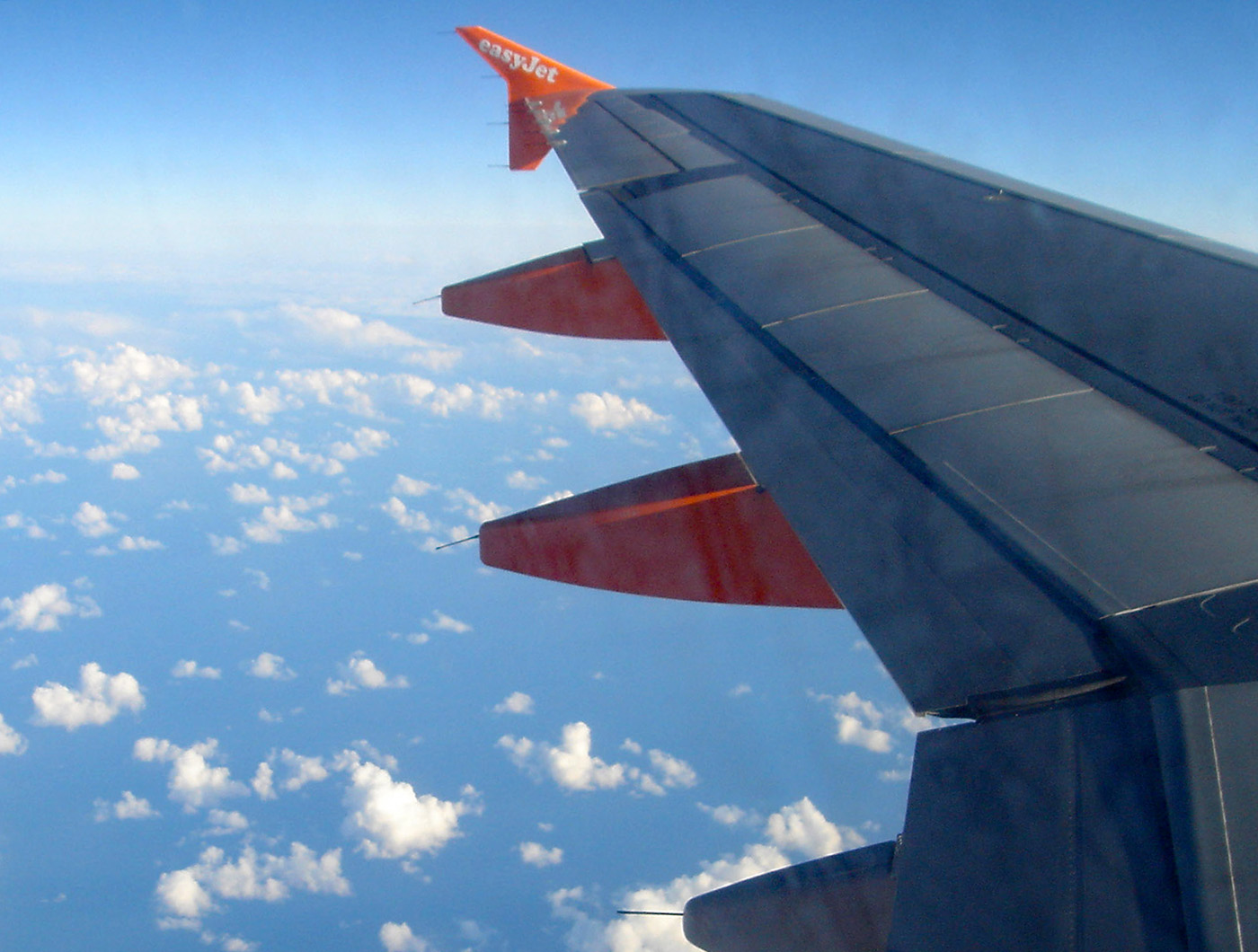 Dynamic pricing is not a new pricing strategy. It has been used for many years in the transport, e-commerce and hospitality sectors. Airlines, for example, have a pricing model whereby as a flight fills up, so the prices of the seats rise. If you book a seat on a budget airline a long time in advance, you may be able to get it at a very low price. If, on the other hand, you want a seat at the last minute, you may well have to pay a very high price. The price reflects the strength of demand and its price elasticity. The business traveller who needs to travel the next day for a meeting will have a very low price sensitivity and may well be prepared to pay a very high price indeed. Airlines also learn from past behaviour and so some popular routes will start at a higher price. A similar system of dynamic pricing is used with advance train tickets, with the price rising as trains get booked up.
Dynamic pricing is not a new pricing strategy. It has been used for many years in the transport, e-commerce and hospitality sectors. Airlines, for example, have a pricing model whereby as a flight fills up, so the prices of the seats rise. If you book a seat on a budget airline a long time in advance, you may be able to get it at a very low price. If, on the other hand, you want a seat at the last minute, you may well have to pay a very high price. The price reflects the strength of demand and its price elasticity. The business traveller who needs to travel the next day for a meeting will have a very low price sensitivity and may well be prepared to pay a very high price indeed. Airlines also learn from past behaviour and so some popular routes will start at a higher price. A similar system of dynamic pricing is used with advance train tickets, with the price rising as trains get booked up.
The dynamic pricing system used by airlines and train companies is similar, but not identical, to first-degree price discrimination. The figure below illustrates first-degree price discrimination by showing a company setting the price for a particular product.
Assume initially that it sets a single profit-maximising price. This would be a price of P1, at an output of Q1, where marginal revenue (MR) equals marginal cost (MC). (We assume for simplicity that average and marginal costs are constant.) Total profit will be area 1: i.e. the blue area ((P1 – AC) × Q1). Area 2 represents consumer surplus, with all those consumers who would have been prepared to pay a price above P1, only having to pay P1.
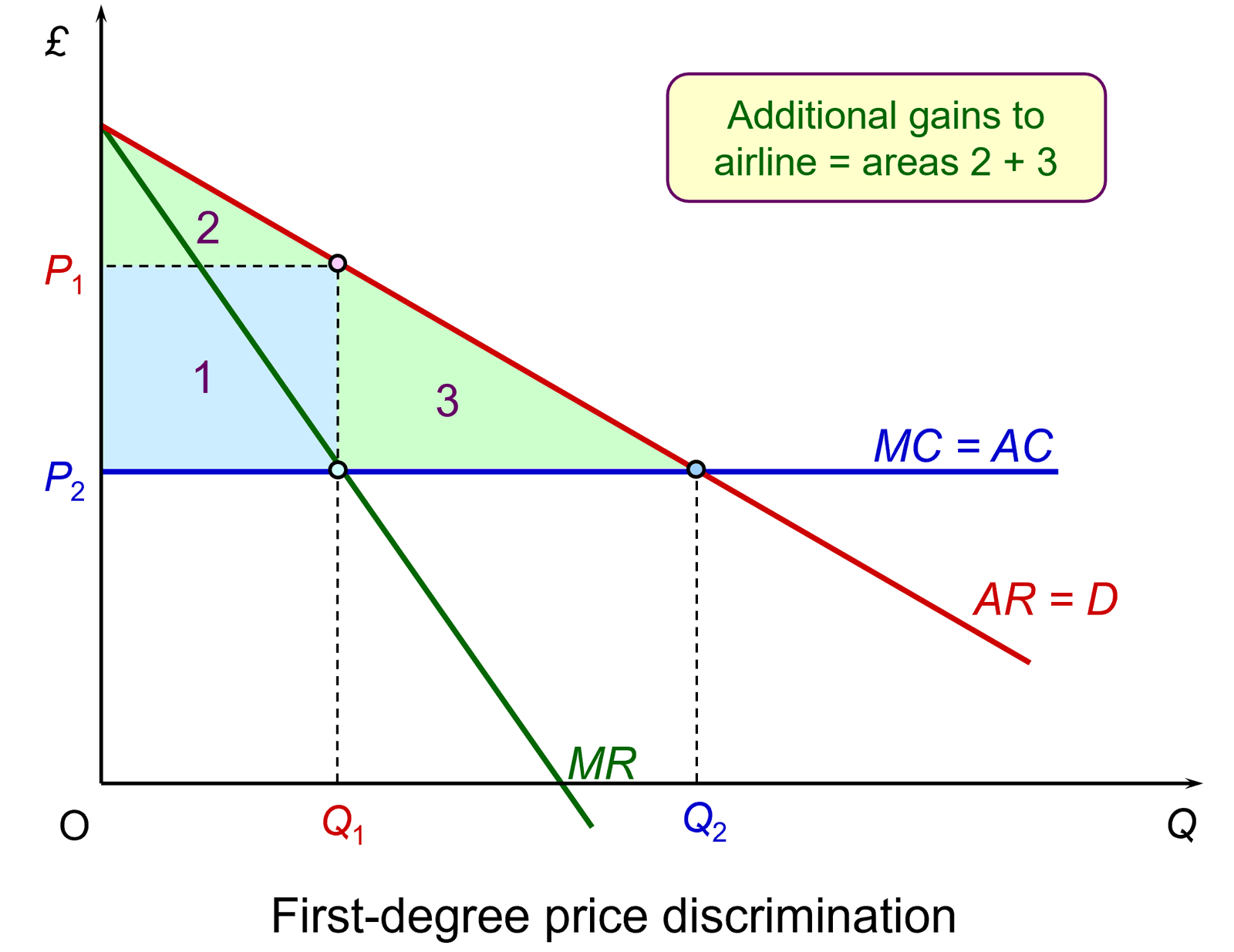 Now assume that the firm uses first-degree price discrimination, selling each unit of the product at the maximum price each consumer is willing to pay. Starting with the consumer only willing to pay a price of P2, the price will go on rising up along the demand with each additional consumer being charged a higher price up to the price where the demand curve meets the vertical axis. In such a case, the firm’s profit would be not just the blue area, but also the green areas 2 and 3. Note that there is no consumer surplus as area 2 is now part of the additional profit to the firm.
Now assume that the firm uses first-degree price discrimination, selling each unit of the product at the maximum price each consumer is willing to pay. Starting with the consumer only willing to pay a price of P2, the price will go on rising up along the demand with each additional consumer being charged a higher price up to the price where the demand curve meets the vertical axis. In such a case, the firm’s profit would be not just the blue area, but also the green areas 2 and 3. Note that there is no consumer surplus as area 2 is now part of the additional profit to the firm.
Although dynamic pricing by airlines is similar to this model of first-degree price discrimination, in practice some people will be paying less than they would be willing to pay and the price goes up in stages, not continuously with each new sale of a ticket. Thus, compared with a fixed price per seat, the additional profit will be less than areas 2 + 3, but total profit will still be considerably greater than area 1 alone. Note also that there is a maximum quantity of seats (Qmax), represented by a full flight. The airline would hope that demand and its pricing model are such that Qmax is less than Q2.
Dynamic pricing also applies in the hospitality sector, as hotels raise the prices for rooms according to demand, with prices at peak times often being considerably higher than off-season prices. Rather then pre-setting prices for particular seasons, dates or weekends/weekdays, many hotels, especially chains and booking agents, adjust prices dynamically as demand changes. Airbnb offers property owners what it calls ‘Smart Pricing’, where nightly prices change automatically with demand.
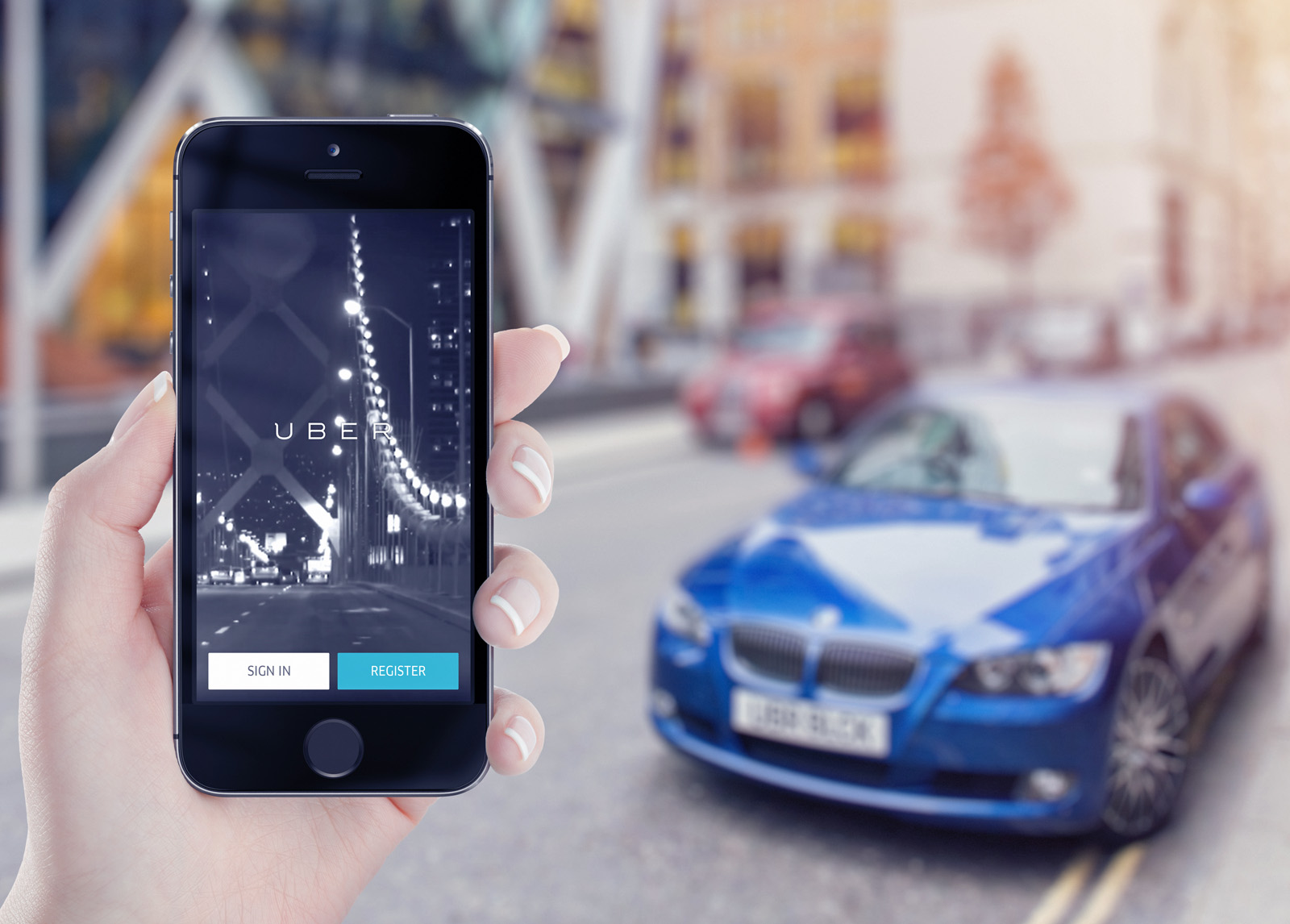 Another example is Uber, which uses dynamic pricing to balance demand and supply location by location. In times of peak demand on any route, the company’s algorithm will raise the price. This will encourage people to delay travelling if they can or use alternative means of transport. It will also encourage more Uber drivers to come to that area. In times of low demand, the price will fall. This will encourage more people to use the service (rather than regular taxis or buses) and discourage drivers from working in that area.
Another example is Uber, which uses dynamic pricing to balance demand and supply location by location. In times of peak demand on any route, the company’s algorithm will raise the price. This will encourage people to delay travelling if they can or use alternative means of transport. It will also encourage more Uber drivers to come to that area. In times of low demand, the price will fall. This will encourage more people to use the service (rather than regular taxis or buses) and discourage drivers from working in that area.
Where dynamic pricing varies with the time or date when the purchase is made, it is sometimes referred to as inter-temporal pricing. It is a form of second-degree price discrimination, which is where a firm offers consumers a range of different pricing options for the same or similar products.
Another example of dynamic pricing, which is closer to first-degree price discrimination is the use of sophisticated algorithms and AI by Amazon, allowing it to update the prices of millions of products many times a day according to market conditions. Another is eBay auctions, where the price rises as the end date is reached, according to the willingness to pay of the bidders.
Attitudes to dynamic pricing
Consumers have grown accustomed to dynamic pricing in many industries. People generally accept the pricing model of budget airlines, for example. What makes it acceptable is that most people feel that they can take advantage of early low-priced seats and can compare the current prices on different flights and airlines when making their travel plans. Pricing is transparent. With the Oasis concert, however, there wasn’t the same degree of price transparency. Many people were surprised and dismayed to find that when they got to the front of the online queue, the price had risen dramatically.
People are familiar of dynamic pricing in the context of price cuts to shift unsold stock. Supermarkets putting stickers on products saying ‘reduced for quick sale’ is an example. Another is seasonal sales. What is less acceptable to many consumers is firms putting up prices when demand is high. They see it a profiteering. Many supermarkets are introducing electronic shelf labels (ESLs), where prices can be changed remotely as demand changes. Consumers may react badly to this if they see the prices going up. The supermarket, however, may find it a very convenient way of reducing prices to shift stock – something consumers are hardly likely to complain about.
 Returning to the Oasis tour, the UK government responded to the outrage of fans as ticket prices soared. Culture Secretary, Lisa Nandy, announced that the government will investigate how surge pricing for concert tickets is used by official retailers, such as Ticketmaster. This will be part of a planned review of ticket sales that seeks to establish a fairer and more transparent system of pricing.
Returning to the Oasis tour, the UK government responded to the outrage of fans as ticket prices soared. Culture Secretary, Lisa Nandy, announced that the government will investigate how surge pricing for concert tickets is used by official retailers, such as Ticketmaster. This will be part of a planned review of ticket sales that seeks to establish a fairer and more transparent system of pricing.
The problem is that, with some fans being prepared to pay very high prices indeed to see particular acts and with demand considerably exceeding supply at prices that fans would consider reasonable, some way needs to be found of rationing demand. If it is not price, then it will inevitably involve some form of queuing or rationing system, with the danger that this encourages touts and vastly inflated prices on the secondary market.
Perhaps a lesson can be drawn from the Glastonbury Festival, where prices are fixed, people queue online and where security systems are in place to prevent secondary sales by ticket touts. The 2024 price was set at £355 + a £5 booking fee and purchasers were required to register with personal details and a photo, which was checked on admission.
Update
On 5 September, the CMA announced that it was launching an investigation into Ticketmaster over the Oasis concert sales. Its concerns centred on ‘whether buyers were given clear and timely information, and whether consumer protection law was breached’. This followed complaints by fans that (i) they were not given clear and timely information beforehand that the tickets involved dynamic pricing and warned about the possible prices they might have to pay and (ii) on reaching the front of the queue they were put under pressure to buy tickets within a short period of time.
Meanwhile, band member stated that they were unaware that dynamic pricing would be used and that the decision to use the system was made by their management.
Videos
 Oasis ticket row: Government vows to act over ‘dynamic pricing’
Oasis ticket row: Government vows to act over ‘dynamic pricing’ Oasis tickets turmoil: UK government to probe dynamic pricing
Oasis tickets turmoil: UK government to probe dynamic pricing What is Dynamic Pricing? How does Uber set its prices?
What is Dynamic Pricing? How does Uber set its prices? Dynamic Pricing, Explained: AI business model | Uber Surge pricing
Dynamic Pricing, Explained: AI business model | Uber Surge pricing Why did Oasis tickets use dynamic pricing?
Why did Oasis tickets use dynamic pricing?
Sky News on YouTube (2/9/24)
Reuters on YouTube (2/9/24)
Masters in Marketing on YouTube, Jamal Meneide (2/5/21)
Simon Caine on YouTube (3/5/24) (Warning: bad language in this video)
The Helpful Economist on YouTube, Cliff Stevenson (1/9/24)
Articles
- Oasis ticket sales – everything you need to know about reunion
- Ticketmaster demand-based pricing system criticised
- I loved Oasis – until I saw Ticketmaster’s dynamic pricing
- A supersonic swindle: my £1,423 Oasis Ticketmaster hell
- Bands urged to oppose dynamic pricing of concert tickets after Oasis ‘fiasco’
- Oasis tickets: what is dynamic pricing and why is it used for live music?
- Viagogo defends reselling Oasis tickets for thousands of pounds as ‘legal’
- Oasis fans face ‘eye-watering’ resale ticket prices
- Would you really pay €500 for an Oasis ticket?
- When ‘dynamic pricing’ works – and when it doesn’t
- The pros, cons and misconceptions of dynamic pricing for retailers
- Dynamic Pricing (Taylor’s Version)
- Dynamic pricing: successful companies that use this pricing strategy
- Five lessons for businesses investigating dynamic pricing
- Inflated Oasis ticket prices ‘depressing’ – government promises review of dynamic pricing
- Lisa Nandy hits out at ‘incredibly depressing’ Oasis ticket sale and orders probe into surge pricing
- Oasis ticket row: How Ticketmaster’s owner has grip on UK live music scene
- CMA launches investigation into Ticketmaster over Oasis concert sales
- Revealed: the touts offering Oasis tickets for thousands on resale sites
BBC News (27/8/24)
BBC News, Annabel Rackham (10/10/22)
Metro, Issy Packer (2/9/24)
The Guardian, Josh Halliday (1/9/24)
The Guardian, Josh Halliday and Rob Davies (1/9/24)
The Guardian, Rob Davies (1/9/24)
City A.M. (31/8/24)
i News, Adam Sherwin (30/8/240
RTE Brainstorm, Emma Howard (3/9/24)
Investors’ Chronicle, Hermione Taylor (11/12/23)
Computer Weekly, Glynn Davis (20/6/24)
Linkedin, Economic Insight (10/7/23)
PriceTweakers, Simon Gomez (25/5/24)
FT Strategies
Sky News (2/9/24)
Independent, Archie Mitchell (2/9/24)
BBC News, Chi Chi Izundu and James Stewart (4/9/24)
CMA Press Release (5/9/24)
The Guardian, Rob Davies, Hannah Al-Othman and Tiago Rogero (7/9/24)
Questions
- What is the difference between dynamic pricing and surge pricing?
- What is buyer’s remorse? How could dynamic pricing be used while minimising the likelihood of buyer’s remorse?
- Distinguish between first-degree, second-degree and third-degree price discrimination. Do the various forms of dynamic pricing correspond to one or more of these three types?
- Distinguish between consumer and producer surplus. How may dynamic pricing lead to a reduction in consumer surplus and an increase in producer surplus?
- Should Ticketmaster sell tickets on the same basis as tickets for the Glastonbury Festival?
- Is Oasis a monopoly? What are the ticket pricing implications?
- Are there any industries where firms would not benefit from dynamic pricing? Explain.
- What are the arguments for and against allowing tickets to be sold on the secondary market for whatever price they will fetch?
- How powerful is Ticketmaster in the primary and secondary ticket markets?

